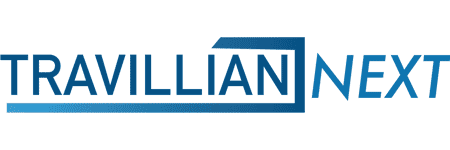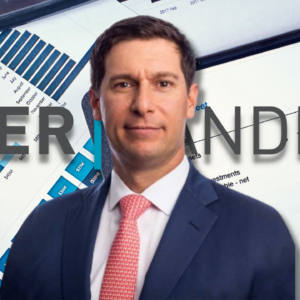Brian Love: 2021 was filled with M&A activity. What are your thoughts about this consolidation trend? Will it continue over the next few years?
Gary Svec: 2021 was an interesting year because we’ve had some pretty marquee deals, some very, very large deals, as we all know. And there’s been a lot of MOE-ish deals, where it’s, hey, let’s get bigger. It can solve a lot of problems in terms of succession issues potentially, increasing market share, increasing size and legal lending limit, lowering efficiency ratios and all those things.
There’s been some pretty interesting transactions in that regard. What I think has really been a little bit slower has been the smaller bank deals. And I think that it’s primarily because the potential sellers are a little bit punch-drunk with the amount of government money that has flowed into the banking sector.
So, if you look at 2021 and you look at the profitability – if you strip out PPP, if you strip out mortgage refi income that really slowed down in the second quarter of 2021 – what you see is fairly stagnant growth, if not shrinkage. We’ve certainly seen robust deposit growth, but that money has gone into cash or liquid investments. We’re seeing credit leverage on the decline. We’re seeing rates at very low levels. Liquidity is very expensive and we’re seeing continued margin compression.
Also, we’re seeing that competition is brutal across the industry for loans. We’re competing with the government who’s giving away money. And we’re trying to lend it to our clients. So that’s been problematic for a lot of financial institutions. As a result, a lot of our business clients are borrowing less, depositing more, and we’re wondering when that is going to turn around.
And the impact of that is, of course, with zero interest rates, getting cheap deposits today sounds like a great opportunity. And certainly, our footings have increased. But it hasn’t created increased margin and that’s going to be potentially problematic as we look into the future. When we rip off the PPP band-aid for 2022, we are seeing substantial earnings reduction – core earnings reduction – without a tax hike and without credit losses, we’re seeing substantial core earnings reduction in community banking.
All of this tends to make sellers become more realistic on the value of their institution and future earnings in today’s rate environment. I believe that there will still be interested buyers that want to grow and lower their efficiency ratio; you need to do that and potentially through growth, you can build your bench.
Brian Love: I think your firm, Performance Trust, has done more subordinated debt transactions for community banks than any firm in the country. So, kudos on that. Why are so many banks issuing sub-debt when earnings, capital and asset quality seem to be strong?
Gary Svec: If you remember, in 2008, before our last crisis, the average capital ratio was 6.5%, or somewhere around that range. Now, the average Tier 1 capital ratio of all banks in the nation is around 10%. At a time when our asset quality is strong (with a really big asterisk, by the way), the government threw in trillions of dollars to make sure we didn’t go through another credit crisis. And we did go through a credit crisis, but the government put a big band-aid over that problem. We have very strong capital today. Again, 10% versus 6.5%. We have over 50% more capital than we had in 2008. We have a far more diversified balance sheet. We don’t have the 500% of capital and construction and development lending anymore. Those banks are gone. So, we are far more diverse.
So why are so many banks issuing sub-debt today? It’s really because of a couple of reasons.
First, it’s really inexpensive. We’re at the all-time lows of rates. If you’re a good bank, a bank that survived everything – WWI, WWII, all the wars of recent memory, oil crises, housing crises, and the 2008 financial crisis – if you made it through all that stuff, you’re a pretty good bank. And you’re looking at your institution right now and saying, why do I need more capital? I don’t think I need it, but if I can get it at these kinds of levels and structure, it’s a very, very interesting source of capital as a war chest.
What can I use it for? What if there is a lot of volatility ahead? (By the way, my personal opinion is we’re in for a lot of volatility ahead.) If that’s the case, sometimes our very best opportunities come at the time of greatest volatility and banks want a war chest of capital to take advantage of those opportunities, as opposed to looking inward and trying to figure out how to get through it.
What if there’s a downturn? Remember in 2008, the banks that had the capital war chests were the ones that were working with the FDIC and did some unbelievable transactions.
Another reason is shareholder liquidity. I will tell you across the industry especially for private banks, but even for a very large public or for a mid-sized public bank, shareholder liquidity is a big deal. Do I want to be able to address shareholder liquidity when I have options on how to deal with it? Or do I want to deal with shareholder liquidity in another 2009 or 2010 environment when there aren’t any options on how to deal with it?
Lastly, if you have holding company debt that comes with covenants, collateral, or guarantees, or if you have senior debt, or bank stock debt, you really need to consider why. Should I have a more stable structure in unstable times? We believe strongly that this is something you need to consider. If I have covenants, collateral and/or guarantees, and I can put sub-debt on that has a superior structure at a similar price with none of those strings attached to it… Why wouldn’t I do that?
So those are things that we’re advising our clients to consider, even if you don’t think you need it, given the pricing and structure, is that something you should consider? And again, the banks issuing it have a very strong debt service coverage and very strong balance sheets. And even if their earnings go down in the future, they’ll still have plenty of earnings, in theory, to service the debt.
The way that you structure sub debt is to think about some other things as well. Consider maintaining an interest reserve to make sure that, in the event of something unforeseen, you can continue to service your debt, which is prudent for both the investor and also for the issuer.
Those are the things that we think through with our clients. And these are the reasons why they’re building a capital war chest. They don’t think they really need it to keep their bank strong, but they want it because it won’t take much for it to be earnings neutral and it could be extraordinarily earnings accretive depending on what happens in the future.
Brian Love: The industry has experienced tremendous deposit growth since the beginning of 2020, and currently banks are flushed with liquidity. How are you advising your clients about this?
Gary Svec: This is something that I think is really critical and that has fallen off the radar for a lot of community banks. Remember when Fed funds were at 3%, and prime was at 6%? We’ll call that the good old days. If you had a bunch of on-balance sheet liquidity, you were making money on that, because you’re earning 3% on cash, maybe 3.5% or 4% on securities, and you had zero interest deposits, and you had capital that you didn’t pay interest on. So at least you were able to make money on that on-balance sheet liquidity. Today it’s a non-accrual asset. I’ve talked with banks that have over 20% of their balance sheet in non-accrual assets called cash. It is a killer. While you’re waiting for rates to go up, every single day, you are losing money with that on-balance sheet liquidity.
So, what do we recommend? What has happened to a lot of community banks? We’ve had a number of loans refinance. We’ve had a number of loans paid off. We put a number of new loans on our books and we’re not keeping up with pledging those loans to the FHLB,FRB, et. al.; you should have as much off-balance sheet liquidity as possible. That comes at a interest cost of time: you’ve got to pledge loans, you’ve got to get the list of exceptions back. In my opinion, you should have massive unused lines of credit with the FHLB and the Federal Reserve. They will lend to you when nobody else will, even if there’s a significant downturn. Fed funds purchased? Forget about it; those will get canceled when you need them the most. But FHLB and FRB lines are the lender of last resort. They’re there no matter what, they’ll lend you money a week before you’re going to be closed if that’s the case.
So, those are off balance sheet lines of credit that are very, very important. Why do I say that? Because I have to invest this on-balance sheet liquidity. I cannot survive if 20%, 25%, 35%, 40% of my balance sheet is a non-accrual asset. I will not be able to survive long-term, so I’ve got to be able to invest those dollars.
But what is everybody worried about? We’ve had 33% DDA growth since COVID across the industry. So, the regulators are worried that if you invest that cash – and then rates go up – deposits may run off because they were “surge deposits” and now they start leaving your institution. So now I have assets that are at a loss, and I’ve got deposits leaving my institution. So, I’ve got to sell assets at a time when everybody else is trying to sell assets. That makes you a panic seller. You make really bad decisions, and you get taken advantage of by the market.
Instead, if I invest a portion, maybe a good portion of this on-balance sheet liquidity and rates do go up and deposits runoff (I don’t think either will happen, but it certainly can), instead of being a panic seller and freaking out, I get to pick up the phone, call the FHLB and say, “listen, I need to borrow “X” millions of dollars and calm down and see what happens”.
Oftentimes, we make long-term decisions based on short-term information, and we should be analytical, we should be calm. We should take a step back and see what happens. Just think about all the volatility that this industry has experienced since COVID. The stock market went down 50%, then rebounded and went down again, then rebounded. We’ve had all kinds of ups and downs, all kinds of volatility in the industry. If that continues, do we want to be making long-term decisions off of short-term information? Or do we want to pause, take a step back, breathe and see what happens? If rates don’t go up or down, these lines of credit will provide protection in those scenarios.
Brian Love: So, in your conversation with community bank executives, Gary, what subject matter expertise is the highest in demand and what hiring strategies work to get those people in?
Gary Svec: The beauty of, again, the remote working, is that if you have a really good search firm to work with – and Travillian is one of the best out there – talent doesn’t need to be physically located where your bank is to make a big impact for your organization.
So, getting a great Chief Technology Officer or Chief Compliance Officer – remotely, or to come to the bank a couple of times a month – is very possible. With folks fleeing certain cities and states, due to pandemic response, political climate or tax situations, it’s actually benefited small town America and the banks located there.
Chief Credit Officers are hard to find. A role that banks believe they have but in 2022 and going forward, they’re going to find out that they need an upgrade in, is the Chief Financial Officer. Most banks have Chief Accounting Officers; they don’t have real Chief Financial Officers. They don’t have somebody who manages the balance sheet, they have somebody who reports the results, and that is going to be a critical skillset into the future. We have to get everything we can out of our balance sheet in order to survive this rate environment. Even as rates change and as we’re competing with FinTech, and as we’re given more challenges, we have got to find people who can do more than just create budgets and financial reports for month-end/quarter-end or fill out call reports.
Also, we, as bankers, want to keep our finger on the pulse of what’s going on as it relates to hiring opportunities. But it’s not our number one job. When I work with firms like Travillian, when there’s an MOE going on or an acquisition going on, you’re on the front lines, figuring out who’s going to be available and who are the best employees that are going to be displaced. And I think that working with the firm that focuses on that full time will give you more insights into what your options are because we can’t be experts on everything.
Brian Love: Well, thank you for the “shout-out” to having a good recruiting firm like us to be your partner. I agree on your assessment that more institutions will desire an upgrade to find a truly tactical CFO – a balance sheet strategist, someone who is truly forward-thinking around ALM, liquidity, M&A. Not settling for a “Controller Plus”.
Gary Svec: I agree. And then again, sometimes you can get that through an acquisition as well. Sometimes there’s an opportunity to do an acquisition, but you can either deepen your bench or you can replace some folks or improve your bench in those cases. So that’s important. But right now, it’s even more critical because it’s not about just banks within or employees within a hundred-mile radius. Right now, you could find folks that are willing to move to a small town because they’re sick and tired of what’s happening in big cities or vice versa.
We’ve had a big influx into cities for the last hundred years and now it’s actually a reversal that’s going on, which is going to create some opportunities for financial institutions. Succession is still something that’s a big, big problem, as well. That second generation of shareholder, that second generation of management is not as involved in the bank anymore.
Ask yourself how many of your shareholders don’t have the same state abbreviation as your bank. If they have different state abbreviations, they are likely not as connected to the bank any longer and that may become a problem. You’ve got to consider that. We talked about that in terms of shareholder liquidity as it relates to succession issues, and you’ve got to be proactive on this.
And our management is 5 years older than they were 5 years ago. Many wanted to retire 5 years ago and they’re really struggling to do that. That’s why having partners that can bring options to the table, I think, is really critical. In this environment, there are folks that you may not have ever thought would want to move to your community, that either will do something remotely or they’ll consider a move to get a better environment for their family, potentially.
So those are some really critical, new trends that have come up, I would say, since the pandemic started and since we’ve gone to remote in many cases.
Travillian’s Banking and FinTech Practice provides Search and Talent Advisory services to depository institutions across the country. Established in 1998, the firm has built a unique platform that touches every corner of the industry. To learn more, click here, or get in touch below!
|
Brian Love, Head of Banking & Fintech |






